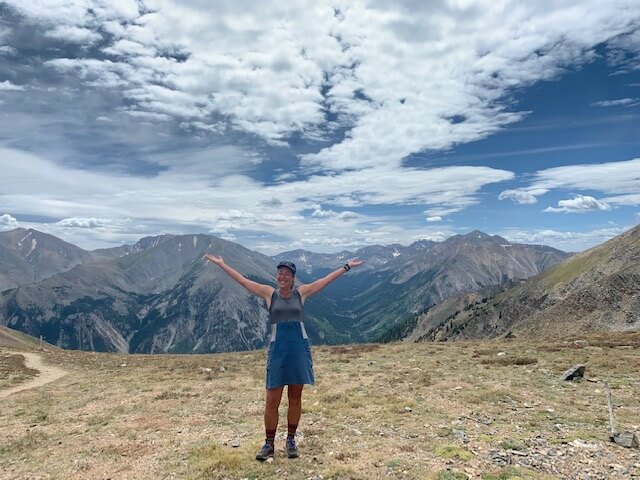Between June 17 and September 23, 2019 alone, I hiked about 2,800 miles from Canada to Mexico along the Continental Divide Trail.
As I have integrated back into “real life,” I have been processing the many lessons that have come from this time of deep solitude in nature. There are many lessons, covering both the practical (e.g., improved navigation skills) and the conceptual (e.g., the power of surrender). If I were forced to choose just one of these lessons as the most valuable, I would undoubtedly say it is the increased ability to find inner silence.
What is silence? Why does it matter? How do you get it?
By silence I mean that inner state that is available when all the chatter of the mind comes to rest. It is a steadfastness that exists in the midst of every chaos swirling around me. From this state I react rather than react. There is more room for deeper reflection, gratitude and happiness.
I believe that silence is a natural state for us and it is our job to attune to it. There are many ways to do this. Being immersed in nature on a long backpacking trip is one way to get there, and the reasons for this are many.

First, participating in challenging activities such as mountain climbing cultivates presence and silence, as they require every ounce of attention to avoid injury or death. When you’re in the zone, there’s no room for mind chatter. You have to be in the now.
Moreover, the solitude you encounter during a long walk in nature is a gateway to silence. When we remove the external noise, it gives us the space to just be. True loneliness involves not only being alone, but also removing all external input, such as music or podcasts.

Furthermore, it reminds you that the silence that is present in all of nature is also present in you when you are surrounded by the wilderness. In the words of Eckart Tolle: “Find a tree and let it teach you silence.” If you’ve ever been alone in a forest, you understand this. That’s possible feeling the silence and you begin to embody it.
A long distance walk also facilitates silence as you learn to let go of expectations. For example, if I focus solely on how far I have to walk to reach my destination (in this case, Mexico), I quickly become frustrated because I rarely meet my own expectations about how many miles I “should” walk. every hour or every day. When I stopped seeing the journey as a means to an end, and was present with every step, breath, and moment, life became much more enjoyable.
These are just a few ways that long-distance backpacking has increased my ability to find silence, but it is not the only way to achieve this inner state. Fortunately, you don’t have to walk 3,000 miles through the forest to get there. Time in nature certainly helps, but you can also implement the strategies of presence, solitude, and removing expectations in the “real world.”
Additional strategies that can be used anywhere to tap into that place of stillness include journaling, meditating, focusing on breathing and/or body sensations, ensuring proper sleep and nutrition, reducing input (less phone time and reading the news) and by looking for beauty in everything.

Increasing your ability to create silence within yourself is so valuable because it connects us to the present moment, where all life exists. The now is truly all we have, and learning how to access it through presence and silence can create true freedom and happiness.
When I embarked on this adventure, I had many intentions, but developing a heightened state of presence and stillness was not one of them. However, I have realized that this is probably the main reason why I continue to seek out immersion in nature again and again.
Writer Katie Gerber is a holistic health and nutrition coach who serves clients both locally and online. In 2014, she completed Aviva Romm’s Herbal Medicine for Women certification. After hiking the Pacific Crest Trail in 2014 and the Colorado Trail in 2016, Katie decided to use her knowledge of botanical medicine and nutrition to help fellow wilderness enthusiasts in their quest for more energy and better health. She transitioned from her career as a pastry chef and enrolled at the Institute for Transformational Nutrition. She now uses her lifelong passion for holistic health with her background in culinary arts to help people live healthier lives, in tune with nature. Katie writes for various publications and speaks at local events. When she’s not writing and working with clients, you’ll likely find her in the mountains, in the garden, or in the kitchen testing recipes. Read more about Katie, her articles and her adventures on her website.
For educational purposes only. This information has not been evaluated by the Food and Drug Administration. This information is not intended to diagnose, treat, cure, or prevent any disease, or to sell any product.
Read more

